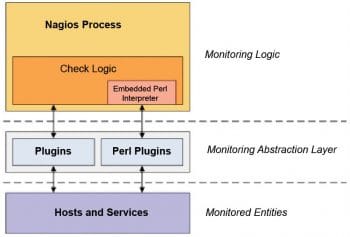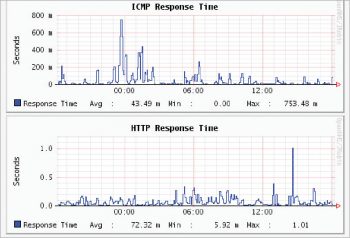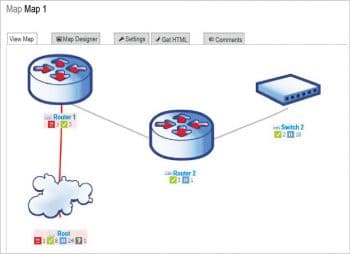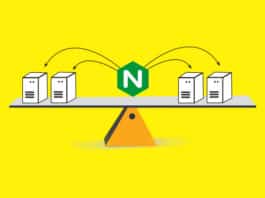
Server monitoring is an onerous task. Remote server monitoring is a boon to administrators of networks. It gives them more flexibility and leaves them free to move away from their offices. This article is an introduction to remote server monitoring through Android devices.
Without any doubt, many businesses rely heavily on their IT network. The stability, infrastructure and the downtime costs linked to maintaining these networks are growing concerns. Besides affecting productivity, IT network downtime causes degradation in the quality of service provided to customers. Looking at the level of competition in this rapidly growing market, a knock to a firm’s reputation can be a costly affair for businesses. The answer to the question, “What measures should be taken to secure your business and reputation to retain customers?” is simple. It is server monitoring.
Server monitoring is the process of taking precautionary steps to help and detect any issue in your IT network that can affect performance. It enables you to recognise and rectify the problem that could cause a major setback to your business. This technology provides the facility of continuously scanning the servers on an allocated network and examining the entire system for any failure or flaw that is discovered by different types of server monitoring software. Server monitoring allows users to manage servers using several server management tools from a host of dealers.
With the addition of virtualisation, network layouts and storage networks to the mix, it becomes difficult for traditional server hardware and OS-specific tools to keep that momentum going, because of which these tools can’t offer end-to-end support. The purpose of server monitoring technology is to provide an effective and efficient up-to-date visual model for monitoring and operating servers.
The need for remote server monitoring
In case of a system crash, it takes time and money to get it fixed. In a crucial situation like this, it is difficult for any organisation to expend more finances to get things up and running again. This is exactly where server monitoring comes into play, helping you to resolve any minor issue that could turn out to be a major one in the near future.
One of the prime benefits of monitoring your remote server is being informed of performance related issues before end users perceive that there is a problem. Listed below are a few reasons for having a remote server monitoring tool.
Server hardware health identification and troubleshooting: Since the dependability of an IT network is of prime consideration, the importance of hardware cannot be ignored. Possessing a server monitoring tool not only assists you with identifying the hardware issue at an early stage, it also analyses the problem before it affects the overall performance of the business.
Keep a check on the performance and availability of remote servers: Server monitoring tools help monitor the performance and efficiency of the installed remote servers. In case of any reliability issues, these tools aid in keeping track of the problem.
Remotely arbitrate performance issues: Remote monitoring tools allow you to carry out steps to resolve problems without being physically present at the location. When trapped in a troubleshooting situation, these tools enable solutions by rebooting servers or restarting websites, which cuts down the chances of intensifying the problems.
Some of the key features of server monitoring are:
1. Automatically discovers the application and dependency mapping.
2. Eliminates faulty scripts with customised built-in alerts.
3. Monitors multiple vendor infrastructure through one Web interface.
4. Accesses applications on the private, public as well as hybrid cloud.
5. Modifies built-in templates for extensive customisation.

Android devices for server monitoring
The basic definition of a network is that it is a connection of machines. When several specifically operated machines are grouped together, they form a network. It is quite an easy job to look after, manage and control the ongoing activities of a network when you are in the office. But, the same routine task literally becomes difficult while you are away from the office or travelling out of town. Rather than depending upon a third party, you have the option of carrying out this task via your cell phone. The server acts as a medium of establishing communication between the client and Android phones.
According to a research paper by Angel Gonzalez Villan and Josep Jorba from the Open University of Catalonia, Barcelona, Spain, an Android application has been developed to run a group of server programs on a mobile device, connected to the network or USB interface. The accessibility of the server is handed over to a small client written in Java, which is operational on desktop and Web systems.
Accepting connections from different clients, the server layer performs the services of device management. The client layer – the remotely accessible one – handles the interactions between the monitored device and control equipment. This architecture system provides a host of connections to different clients, allowing remote control to all users. The implementation of server monitoring is done as an Android application for the user to activate the services provided by the service layer.
Applications used for server monitoring
Without server monitoring tools or software, IT professionals have to take on a big burden as it requires immense manual effort to manage servers and other integral applications. Remote server management looks after and upgrades the uptime of servers, failing to do which could result in a change in administrative plans. A good server audit not only gives enumerative information of the servers, but also ensures better functionality and smooth performance. This includes alerting capabilities, comprehensive coverage, performance benchmarking, data visualisation, etc.
Here is a list of a few server monitoring tools that can effectively cater to needs of businesses.
Nagios
This is one of the best monitoring tools, and empowers organisations to recognise and solve IT infrastructure issues, avoiding crucial business mishaps. This app enables users to create reports on trends, alerts/notifications and availability, all via a Web interface.
Given below are the pros and cons of Nagios.
Pros
- Nagios is open source software. It’s free to use and edit.
- It has an open configuration, which makes it easy to add custom scripts to extend the services available.
- There are many devices which the Nagios system can monitor. The requirement is an SNMP protocol on that device.
- Alerts, notifications or comments about the status of the system are provided. It has a variety of tools for this purpose.
- It has many plugins and add-ons, which are free to download and develop.
Cons
- Many features are not available on the free version of Nagios. Features such as wizards or the interactive dashboard are available on Nagios XI, which is very expensive.
- There’re many configuration files which are very hard to configure.
- Nagios Core has a confusing interface.
- Nagios can’t monitor all aspects of networks (such as bandwidth usage or availability).
- Nagios can’t manage the network, but just monitors it.

OpenNMS
Equipped with automated and manual discovery options, OpenNMS’ performance measurement has a system and measurement tool. Being open source and hence freely available, there is absolutely no upgrade or maintenance cost.
Given below are the pros and cons of OpenNMS.
Pros
- Free licensing!
- Good support and documentation through wikis and mailing lists.
- Full featured and infinitely flexible.
- Its Path outages feature minimises excessive alerting.
- Reasonable support costs through the OpenNMS Group.
Cons
- Steep learning curve.
- Interface not very intuitive.
- Most customisation requires learning and modifying various config files.
- Money saved on licensing may have to be spent on development and maintenance.
Paessler
After re-designing its Web interface completely, Paessler has added support for an HTML interface for a host of mobile device platforms. Its interface has integrated Google Maps, which allows this software to display geographical maps for creating custom network views.
The pros and cons of Paessler are listed below.
Pros
- Low price.
- Flexible monitoring for apps, networks and more.
- Includes many useful features at no extra cost, e.g., Netflow, high-availability, remote probes.
- Flexible alerting, comprehensive reporting.
Cons
- Map designer falls short.
- Dashboards are not easily customised.
- Manually configuring sensors is not recommended.

SolarWinds
SolarWinds products are used by millions of users across the globe for the maintenance of network devices. Offering an excellent UI design and mobile accessibility, SolarWinds boasts of features like customisable as well as automated network mapping.
SolarWinds has the following pros and cons.
Pros
- Excellent UI design.
- Customisable, automated network mapping.
- Great community support from Thwack.
- Mobile access.
- Native VMware support.
Cons
- Can’t configure alerts from the Web console.
- Group Dependency configuration is clumsy.
- Reporting module needs better ad-hoc reports.
- No native support for Microsoft Hyper-V, but only for SNMP.




Nice job!, however I am missing Pandora FMS. It can scale and offer more service on top of the server monitoring service. I have monitored business processes. Pandora FMS allows me to check in the same tool business processes status and network and server status all together in different views.
I am missing Pandora FMS. It can scale and offer more service on top of
the server monitoring service. I have monitored business processes.
Pandora FMS allows me to check in the same tool
nodelizer
business processes
status and network and server status all together in different views.